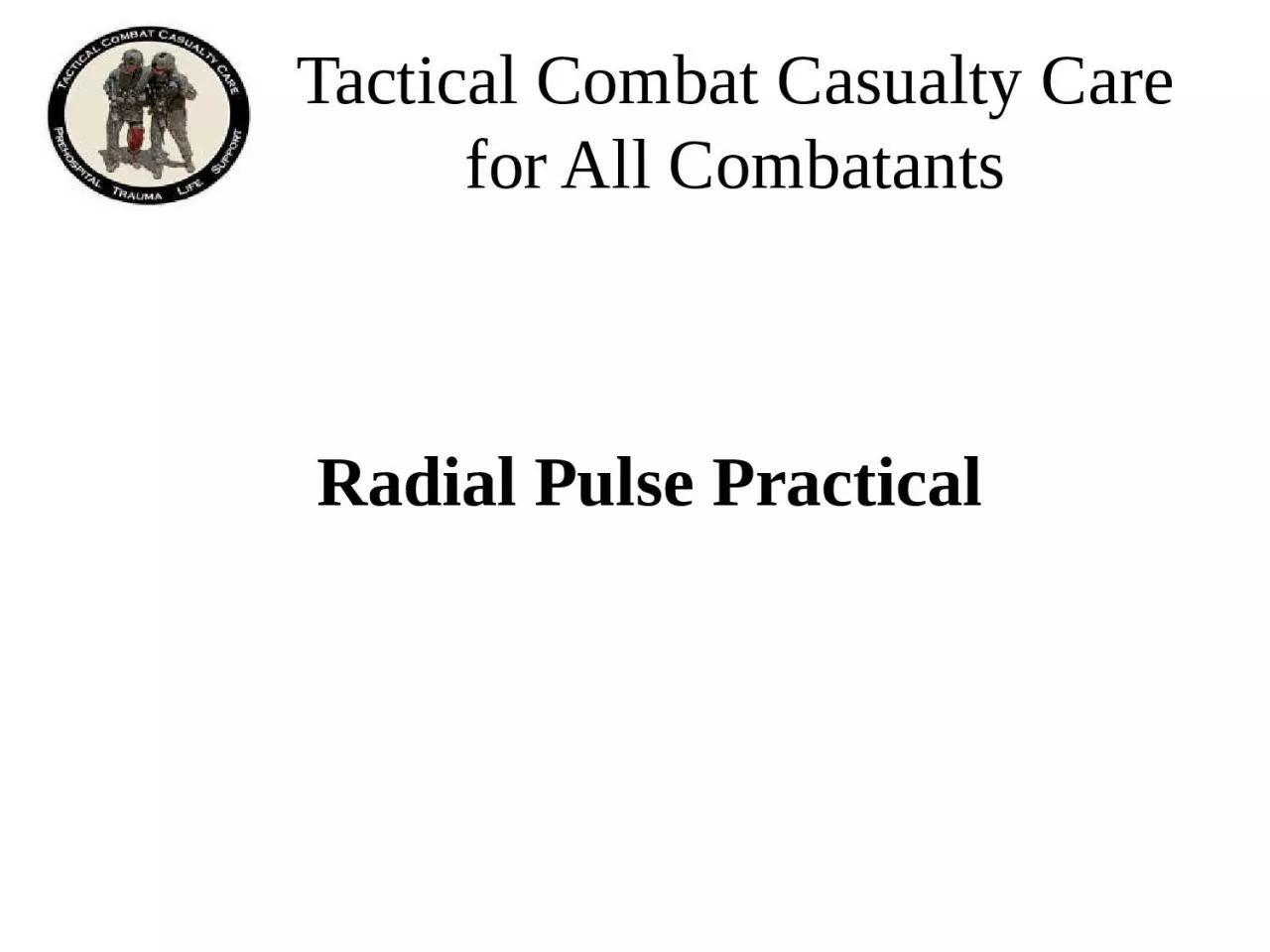

What is a pulse When the heart pumps and forces blood into the arteries the surge of blood creates a pressure wave that is transmitted along the arteries This pressure wave is the pulse ID: 1037717
Download Presentation The PPT/PDF document "Radial Pulse Practical Tactical Combat C..." is the property of its rightful owner. Permission is granted to download and print the materials on this web site for personal, non-commercial use only, and to display it on your personal computer provided you do not modify the materials and that you retain all copyright notices contained in the materials. By downloading content from our website, you accept the terms of this agreement.
1. Radial Pulse PracticalTactical Combat Casualty Care for All Combatants
2. What is a pulse?When the heart pumps and forces blood into the arteries, the surge of blood creates a pressure wave that is transmitted along the arteries. This pressure wave is the pulse.You can feel these pressure waves with your fingertips. It is usually easier to feel the pulse if the artery is on top of a bony area such as at the wrist.You can do this in noisy and/or dark environments.
3. Radial PulseOn the front of the wrist, on the thumb side.Next to the first big tendon.Press gently with your index and long fingertips.Count the pulse for 30 seconds and multiply by 2 to get the pulse rate.
4. Other PulsesDorsalis pedis arteryBrachial arteryPopliteal artery
5. PracticeDivide into groups of four.Each student determines the radial pulse rate of each other student in the group.Repeat for other pulses.Your classmates’ pulses have normal strength.The pulse of a casualty who has lost a lot of blood will not be this strong.If his pulse is weak or you can’t feel it at all- He needs a medic!